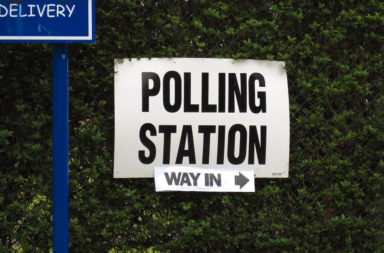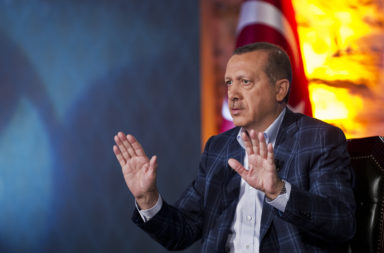Paris, Nice, London, Berlin, and Barcelona would once have had only their desirability as tourist destinations in common. Now they have the common bond of having been targets for IS inspired terrorism. And with this pattern of attacks likely to continue the future of life in Europe, particularly in city centres, seems bound to be fraught with fear and tension.
Living in fear is the new normal
Will life ever be the same again, will life ever be sane again? At least in Europe it seems unlikely, at least for the foreseeable future. Last Tuesday’s false alarm in Barcelona, in which police suspected a bomb in a vehicle, underlined both the heightened sense of anxiety and the increased security levels it has created. Last Friday’s bomb on a London tube train, which luckily failed to detonate properly, was one step closer to the real thing, leaving as many as 30 people with burns. As we wait for the next attack, knowing this is definitely a when and not an if situation, Europe as a whole feels more vulnerable and powerless than it has for many years.
Former director general of MI5 Lord Evans told the BBC in a recent interview: “I think this is genuinely a generational problem. I think we are going to be facing 20 to 30 years of terrorist threat and therefore we need, absolutely critically, to persevere.”
What can be done to defend citizens against such acts of senseless and barbaric violence? The unpredictability of low-tech attacks with vehicles leaves few choices, apart from the restriction of access to city centres with barriers and bollards. This can be done but is often impractical and can create a repressive atmosphere. And it still leaves the option of suicide bomber attacks, as in the recent Manchester attack, or armed assailants attacking groups of civilians in crowded areas. Getting hold of guns is relatively easy in many European countries and, if that fails, obtaining knives is even easier.
Hearts and minds – turning the tide
But while we know about the how, at least for now, we struggle to understand the why question. Much of the anguished “why oh why” commentary in recent years has focused on a so-called battle for hearts and minds, a battle to convince young Muslims in European countries that their future lies in the values of their home countries, and not in a fundamentalist future of Sharia law and extreme ideology.
The corrosive impact of unemployment, poverty, propaganda , perceived or real discrimination and a lack of integration can only partly explain the level of alienation which turns people against their home country, or perhaps host country would be a better description. And of course many attackers have been home-grown, recruited over the internet, or self-incubated in the many countries across Europe where parallel societies increase the risk of separate development outside their norms.
With the push of dangerous fundamentalist preaching in many large European cities and the pull of IS in their diminishing territories, the conveyor belt of returning fighters will also continue to produce an enemy within in our society. While we battle with the push and pull factors on a hearts and minds level, we need to get better at preparing for those who have already slipped mentally or physically through the net. And in order to stem the flow start a long overdue allocation of serious resources to the tangible problems which partially explain a drift towards IS and away from European values. Merely telling people what they should and shouldn’t think will not be the answer.
Funding the fight
If we are to stop or at least reduce the accelerating trend of autonomous cells striking at civilians in Europe, we need to think again about how we spend our money on policing and defence. Defence is after all about preserving a way of life, not just preventing invasion and physical occupation, and terrorism demands well-funded joint working between all the relevant organisations.
Police budgets in the UK are being stretched as money funnelled to counter-terrorism activities leaves gaps in the network, as highlighted by Chief Constable Sara Thornton of the National Police Chiefs’ Council.
NPCC Chair says there’s a need to rethink funding for already stretched police. https://t.co/SARyxNKt5x pic.twitter.com/SrWXI0lSzE
— NPCC (@PoliceChiefs) September 22, 2017
Putting more money into the thinkers, the listeners, the phone tappers and internet trawlers would be a welcome start, but as long as the heart of the beast is beating no amount of stopping its disciples will win the war. While a city or state or some patch of land exists where an alternative universe of terrorism theology lives, breathes and breaks all those who question it, it will continue to attract those who feel the west has failed them, hates them and scorns them. It is also a sort of “worthy” alternative for failed criminals and lost souls out of sync with their own societies. Better a fighter than a failure, will be the story they sell themselves in many cases.
So how can the beacons of hate theology and their message of a wholly unholy war be extinguished? Large-scale military action is now out of favour, for obvious reasons. After the Iraq war and Afghan campaign led to heavy losses for the UK and US, and mixed results (disaster in Afghanistan perhaps pending), there is little public appetite for sending large troop numbers into unwinnable wars. If taking the fight to IS on a large scale is not going to happen, is there an alternative to constant vigilance, increased surveillance and an increasing anxious society?
Some commentators, particularly those of a left-leaning “anti-war” persuasion, believe the apparent source of IS anger can be removed by retreating from and no longer interfering in middle-east politics. But why should this appease a group for whom western society reflects everything they hate. Is their war about actual foreign policy or about destroying our values and existence? A group which claims most of Spain as part of its own domain is not really based on or representative of rational values or behaviour.
If we assume that, short of Spain surrendering to IS, attacks will continue for the foreseeable future, then increasing resources for a new approach to the problem has to be an urgent priority. And where could these resources come from? Perhaps the ongoing debate ignited by Donald Trump about some NATO members not paying their way, by not achieving a 2% of GDP target for NATO contributions, needs to be refocused on whether the money is best spent on large standing armies waiting for one war while another one is developing outside the barracks and in the battle fields of city streets.
In a speech at NATO HQ in May this year, Trump took a small step in this direction, saying: “The NATO of the future must include a great focus on terrorism and immigration, as well as threats from Russia and on Nato’s eastern and southern borders.”
Getting back on the front foot
NATO has 29 member states, committed by article 5 of its founding treaty to consider an attack on one or several members to be an attack on all. As such it has very large standing forces made up of its member states’ armed forces. The main bogeyman for most of its existence has been Russia or the USSR as was, but now that the Russians are probably not coming, at least not in tanks, although perhaps via the internet, a large military machine supposed to preserve our democracy and way of life is more or less impotent against random attacks on civilians in city centres.
Tanks patrolling the streets is not likely to be the solution to this problem and tanks cost a lot of money, some of which could perhaps be better spent on intelligence, counter-terrorism, increased special forces operations and the sort of community policing which acts as a conduit from the streets to the spies.
The aerial bombing campaign in Syria has not stopped bombs and attacks in Europe, and a large-scale “boots on the ground” campaign is not going to happen, so a third way is needed. In this new climate of blitzkrieg terrorism, where an often suicidal enemy holds the trump card of low-tech anytime/anywhere spontaneity, we need to fight terror with terror. This need not mean sinking to the level of the enemy but it will mean learning to use Europe and NATO’s large military numbers, power and funds more intelligently.
IS strikes fear into the hearts of European citizens, with its unpredictability and indiscriminate savagery, and these are its key advantages – fear and unpredictability. Western powers, on the other hand, can slowly and methodically help allies take towns and cities back in Iraq or elsewhere, over many months, but in this time the brains escape to fight another day. Finding ways to become as nimble, as unpredictable, as far-reaching and frightening, has to be the mission for the combined military and counter-terrorism forces facing IS and their friends.
In uncertain times in both Europe and the US, with rising levels of fear and prejudice about outsiders and contempt for those with opposing views, new questions will emerge about the moral standards appropriate for waging war against an enemy which knows no bounds and has no fear of death or destruction.
Torturing enemies “for democracy” has been proven to be a moral and actual failure, best left to the scripts of TV series (see 24, made before there really was a black President), and it can only be hoped that western governments will not overstep the mark both domestically and externally in the years ahead.
Treading the fine line between fighting a just war with appropriate aggression and determination, and sinking to the level of those who wish to destroy everything it stands for, is likely to be the challenge facing Europe and western civilisation in general for many years to come.




